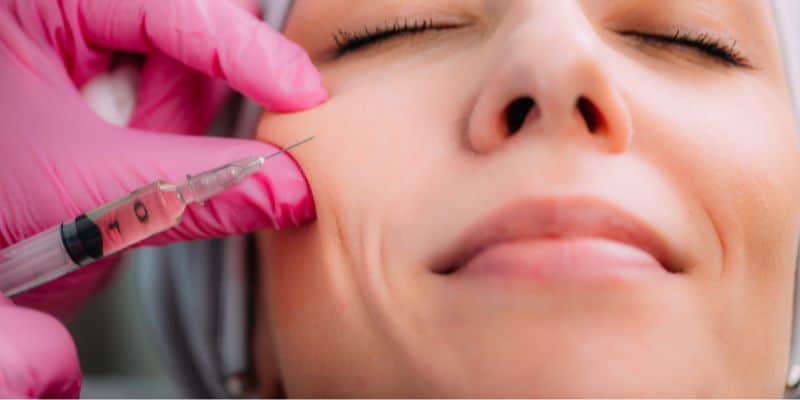
Cheek augmentation stands as a powerful tool in the arsenal of aesthetic medicine, enhancing facial symmetry and restoring youthful fullness. Within the array of available procedures, Restylane Lyft, a hyaluronic acid-based dermal filler, has emerged as a promising solution. This article will delve into the application, effectiveness, and safety of Restylane Lyft for cheek augmentation.
This article will provide an overview to its practical use and highlight comparisons with other popular augmentation techniques. Ultimately, the goal is to provide an honest perspective to enable informed decision-making when considering Restylane Lyft for patient treatment plans in the realm of facial aesthetics.
Background on Dermal Fillers
The rapidly evolving field of aesthetic medicine has witnessed a marked shift in treatment strategies for addressing age-related changes in facial aesthetics. An integral part of this shift involves the increasing utilization of dermal fillers to restore and rejuvenate facial volume and contours. Understanding the composition, action, and clinical utility of these dermal fillers is paramount for a practitioner’s successful outcome in this area.
Dermal fillers are injectable substances used to fill in or plump up areas of the skin that have lost volume or smoothness with age, such as wrinkles, facial lines, and hollow cheeks. They are often made up of materials that are biocompatible and have a proven safety record for human use. One of the most common materials used is hyaluronic acid (HA), a naturally occurring sugar found in the skin that attracts and holds water to help maintain skin plumpness and hydration.
Restylane Lyft is one such HA-based filler, belonging to the class of non-animal stabilized hyaluronic acid (NASHA) fillers. NASHA fillers are produced through bacterial fermentation and stabilized to resist rapid degradation in the body, thereby providing a longer-lasting aesthetic outcome compared to non-stabilized HA fillers.
The mechanism of action of HA fillers, including Restylane Lyft, lies in their capacity to absorb water and swell upon injection. This action provides immediate volume to the treated area, smoothing out wrinkles, folds, or hollows. In addition, some HA fillers, due to their cross-linking technology, can stimulate the body’s natural production of collagen, thereby contributing to the restoration of skin elasticity and firmness over time.
Restylane Lyft, in particular, is designed with larger gel particles and a higher degree of cross-linking, compared to other products in the Restylane family. This formulation makes it an excellent choice for treatments requiring a substantial volume, such as cheek augmentation, where it can create a natural-looking elevation of the cheeks, restore youthful contours, and correct age-related midface volume deficit.
Moreover, the reversible nature of HA fillers offers an additional layer of safety. If adverse reactions occur, or if the patient is unsatisfied with the aesthetic outcome, the effects can be reversed using hyaluronidase, an enzyme that breaks down hyaluronic acid.
Restylane Lyft for Cheek Augmentation
Restylane Lyft, with its unique formulation, has evolved into a tool of choice for medical professionals aiming to achieve natural, effective cheek augmentation. As an FDA-approved hyaluronic acid-based dermal filler, it has established its position in aesthetic medicine for the non-surgical enhancement of the cheek region.
Clinical studies have illustrated the significant impact of Restylane Lyft in achieving the desired cheek augmentation. A double-blind, randomized study published in Dermatologic Surgery (2015) reported 95% of patients treated with Restylane Lyft expressed satisfaction with their appearance two months post-treatment. Such research underscores the high efficacy and patient satisfaction rates associated with this filler.
Moving to the practical aspects of using Restylane Lyft for cheek augmentation, there are several important considerations. First, a thorough assessment of the patient’s facial structure and aesthetic desires is paramount. This enables the physician to decide on the appropriate volume and injection points to sculpt the desired contours.
During the procedure, Restylane Lyft is injected deep into the dermal layer of the skin. The filler, with its larger particles and high lifting capacity, enhances volume and contours the cheek area, providing a significant lift. To achieve optimal results, the injection technique, whether linear threading, fanning, or cross-hatching, should be individualized based on the patient’s anatomy and desired results.
Following the procedure, patients should be advised on aftercare instructions. Common recommendations include avoiding strenuous activity, sun exposure, and heat for 24 hours post-injection. This helps to minimize the risk of exacerbating any potential swelling or bruising that might occur as a side effect.
The safety profile of Restylane Lyft is favorable, with the most common side effects being temporary and mild in nature. These typically include bruising, swelling, redness, pain, tenderness, itching, or rash at the injection site. In rare cases, lumps or bumps, discoloration, or stiffness may occur at or around the injection area. It is critical to thoroughly inform patients about these potential side effects and let them know when to seek medical attention should any issues arise.

Comparing Restylane Lyft with Other Cheek Augmentation Techniques
Restylane Lyft, a dermal filler primarily composed of hyaluronic acid, has garnered significant interest in the realm of aesthetic medicine for its efficacy in cheek augmentation. However, a comprehensive understanding of its relative benefits and drawbacks requires a comparison with other commonly utilized techniques for the same purpose.
There is a wide variety of hyaluronic acid-based dermal fillers on the market, each with its own unique attributes. For example, Juvederm Voluma, another FDA-approved filler, is also utilized for cheek augmentation. Both Restylane Lyft and Juvederm Voluma have cross-linked hyaluronic acid formulations, contributing to their longevity. While they share similar safety profiles, some studies indicate a potential for slightly higher longevity with Voluma. However, Restylane Lyft is often cited as providing a more precise, controllable application due to its gel consistency, which can be a deciding factor for practitioners focusing on sculpting and detail work.
Another competitor, Sculptra, operates differently as it’s a poly-L-lactic acid-based filler that works by stimulating the body’s own collagen production over time. While Sculptra can provide more long-lasting results, the results are not immediate as they are with Restylane Lyft, and multiple treatments are often required. Furthermore, Sculptra, unlike Restylane Lyft, cannot be dissolved or adjusted post-injection with hyaluronidase.
Switching the focus to more invasive techniques, surgical options such as cheek implants and autologous fat transfer provide permanent augmentation. However, these methods come with the inherent risks of surgery, including anesthesia complications, infection, scarring, and a longer recovery period. In contrast, Restylane Lyft presents a non-surgical, minimally invasive alternative, with immediate results and a lower risk profile. Nevertheless, the longevity of Restylane Lyft, while considerable for a dermal filler, does not match that of surgical interventions, necessitating periodic treatments to maintain results.
Thread lifts present another non-surgical alternative for cheek augmentation. These employ biodegradable threads that are inserted subcutaneously to lift and contour the cheek area. However, they require a high level of expertise for proper placement and carry a risk of irregular contouring and puckering of the skin if not done correctly. Moreover, the longevity of thread lifts is typically less than that of Restylane Lyft, and they do not provide the additional benefit of enhancing the skin’s hydration and texture, as hyaluronic acid fillers do.
It is critical for medical professionals to understand these key differences when deciding upon a treatment plan. Each patient presents a unique set of needs and considerations, which may make one technique more suitable than another. Factors such as the desired longevity of results, recovery time, tolerance for risk, and budget will all play a role in this decision-making process.
Summary
Wrapping up, Restylane Lyft is a reliable tool for cheek augmentation in aesthetic medicine. Its hyaluronic acid-based formulation has proven effective in restoring volume, shape, and contour to the cheeks, yielding significant patient satisfaction. Its safety profile has been consistently reported as favorable in peer-reviewed studies, making it a valuable alternative to surgical methods. Furthermore, the detailed understanding of its application process can empower healthcare professionals to deliver optimal results for their patients. With exciting future trends and potential areas for research, Restylane Lyft holds a strong position in the realm of dermal fillers for cheek augmentation. Therefore, for professionals considering a range of options for their practice, Restylane Lyft presents an advantageous choice, both in terms of safety and efficacy.
